 ISIS/ISIL Execution Video: The Sequels
ISIS/ISIL Execution Video: The Sequels
While I thought it important last February to actually sit through the ISIS video of the burning alive of captured Jordanian pilot Muadh al-Kasasbeh that so many opined about and so few actually watched, this Islamist media project has devolved with remarkable speed into little more than a genre of lurid revenge porn.
In the sequels, a selection of which I’ve viewed in whole or in part, the format repeats itself again and again: The prisoners, in orange jumpsuits, indict themselves (one gathers this from the documentary tropes, since the videos have no English-language subtitles), intercut with stills and video clips of the destruction they presumably wrought; then they get put to death in some gruesome fashion. From a cinematic standpoint, same plot, same structure, ad nauseam.
Aside from whatever specific information about their ostensible crimes these prisoners of war and “spies” divulge in the first part of the videos, the only differences are in the means with which the jihadis dispatch them. Here their captors expend all their ingenuity thinking up new and bizarre methods of execution — crushed under a damaged building dynamited to collapse upon them, seated on landmines and blown to smithereens, beheaded by a chain of explosives, drowned in a cage suspended from a crane, run over by a bulldozer, crushed under a tank, locked in a car and targeted with a grenade launcher, tied to a pole and blown to pieces with a bazooka, roasted while hanging from chains suspended over flames. That’s aside from your run-of-the-mill beheading, a pistol shot from an armed boychild, stoning (for women), getting thrown from a ninth-story balcony (for gay men), and other theologically sound — because imam-approved — Islamist commonplaces. (Not to mention the random killing of civilian Muslims and non-Muslims alike in suicide bombings, celebrated as “sacred explosions” by “martyrs.”)
One of the most recent installments involves a two-fer in which “The Islamic State executed three detainees in the ancient Syrian city of Palmyra by strapping them to pillars and then blowing them up along with the antiquities, the Syrian Observatory for Human Rights reported,” according to the October 27 Associated Press story. (For some reason ISIS/ISIL issued no video of this occasion, only a few stills made from a considerable distance.) Perhaps next they’ll throw in the mullah-sanctioned pedophilic rape of an enslaved Yazidi girlchild.
The development and marketing of this cinematic franchise illustrates the problem with the slasher genre of filmmaking: You have to keep upping the ante in the blood-and-gore department, either by multiplying the body count or by inventing ever more savage, ingenious ways to kill, maim, or otherwise devastate people. (Ask Rob Zombie.) And absent some compelling, evolving narrative, which for emotional continuity and spectator involvement generally requires at least one recurring, charismatic character, either or both of those approaches wears thin sooner or later for even the most enthusiastic fan of the form.
The Blame Game
ISIS/ISIL tacitly paints itself as the injured party in these eye-for-an-eye morality plays: You did thus and so to us, therefore we do this to you. You started it, you have only yourself to blame. That posture blithely ignores their forces rampaging across the middle east and their energetic and sometimes effective solicitation of related barbaric thuggery worldwide. Thereby they implicitly deny that the ensuing military response has any causal connection to their own grotesque theology and the appalling practices they use it to justify.
Coming to the ISIS videos from the House of War, as I do, rather than from the Ummah, I share none of the primitive, lunatic beliefs that give these executions moral resonance for the faithful worldwide as some form of crude justice. Nor, as a non-combatant, do they lead me to second thoughts about taking the field against caliphate forces (presumably part of their intent in relation to their primary audience). For me, they function simply as messages: position papers, statements of intent. All are sadistic (given that, as Stalin and Pol Pot demonstrated so effectively, a quick bullet to the back of the head would do the job) and propagandistic. Some seem self-evidently symbolic, others much less so.
And if unclarity is a cardinal sin of communications, tediousness stands near it on the list. For all their horrific content, these videos have quickly become boring — at least for me, lacking as I do any appetite for extravagant human sacrifice. Like the reams of lascivious prose subsidized and published by the Catholic Church detailing the martyrdom of assorted saints and the tortures applied to accused apostates, witches, and warlocks during the Inquisition — or, for more current and secular counterparts, the overflowing violence, suffering, and murder in such popular TV series as Sons of Anarchy, Hannibal, and Vikings — it sinks rapidly to the level of the pathological, and stays there.
How many Islamist snuff films do you want to see? Watch any one of them, via the links above, and you’ve seen them all. (If you decide to watch one, I suggest the first; it’s all downhill from there.) But don’t take my assessment of their style and content as a trivialization of the culture that produced them. The makers of these films are true believers in Islam, perhaps its truest, Muslim to the bone. Make no mistake about that.
Images and Projections
Taken separately or collectively, as visual images these videos and stills evoke indelible mental projections of Islam itself: visions of the faith, of the faithful, of their beliefs and practices, of their prophet, and of their deity. I find it hard to picture the audience to whom those projections would appeal. Yet the flow to the Islamic State not only of regional Islamists but of western converts to radical Islam as well as ostensibly acculturated, westernized yet somehow radicalized people of Middle Eastern origin (adults and teenagers, all of them reasonably well-educated), in tandem with the seemingly uncoordinated “lone wolf” Islamist atrocities like the Charlie Hebdo massacre in Paris, indicates that this set of images holds some profound appeal to individuals of a certain mindset.
Whatever magnetic pull those actual images and visual projections exercise on believers, they generate at the very least an equal and opposite reaction. By that I refer to the negative effect of those images and projections on non-Muslims worldwide — a revulsion intensified by the abject failure of so-called “moderate Islam” to denounce Islamism in general and its proudly bloodthirsty component in particular. From this silence one can only conclude that, faced with a version of their faith that finds support in the Qur’an and hadiths and endorsement from recognized if controversial religious leaders, “moderate Islam” either covertly approves of these extremes or cowers in the face of them.
As we now know, the decision to “do jihad” can lurk within any seemingly moderate Muslim, whether born to the faith or converted to it, potentially activated by any real or perceived grievance committed by other Muslims or the kuffar, at the cost of indiscriminate attacks on civilians of all faiths and none. Given this demonstrable truth, around which evidence accumulates by the hour, the perception of all Muslims as potentially dangerous has some basis in fact. As I’ve noted previously, I live in an ethnically diverse neighborhood — Puerto Ricans, Mexicans, African Americans, Liberians (from both sides of that conflict), Sikhs, and a welter of others. All fine with me. But the appearance of women in full burqa on our local streets — for the first time ever these past two years — has given me pause, and cause for concern.
Consequently, watching the news lately, with its continuous reporting of the European Union’s migrant/refugee crisis, leaves me with mixed feelings at best — my own vicarious versions of the obvious conflicted motives and realistic anxieties of the EU citizenry. However much one empathizes with the plight of millions of people desperate to escape a war zone, fleeing religious persecution, seeking economic opportunity, or some combination of those three, it’s hardly realistic to expect countries experiencing their own economic crises to absorb tens of thousands of newcomers who, at least for the immediate future, will depend entirely on the social safety net of the countries into which they’re heading.
It’s certainly hypocritical to make that demand on the basis of humanitarian principles nowhere in evidence — now or ever — in the cultures of origin of these seekers of sanctuary. Just imagine the fate of refugees and immigrants if the flow went in the other direction, with non-Muslims fleeing from the EU into the Middle East. Visualize the warm welcome they’d get.
So the images — of the drowned boychild Aylan, of the Hungarian far-right TV reporter Petra László kicking and tripping people in flight, of hordes of asylum-seekers walking along railroad tracks and living in makeshift shelters in guarded camps — offend our sense of decency, understandably. They pair up, in our cultural memory, with the deeply embedded images — and, for some still living, the actual experiences — of “displaced persons” wandering around post-World War II Europe.
But the comparison is significantly inexact. For all their national and cultural differences, their resettlement did not threaten the existing structure of secular European society. Their varied religions had long since abandoned any hegemonic goals they once pursued, adopting an ecumenical posture toward the various Christian sects, downplaying their anti-semitic tendencies, and professing a live-and-let-live attitude toward other ethnicities and belief systems.
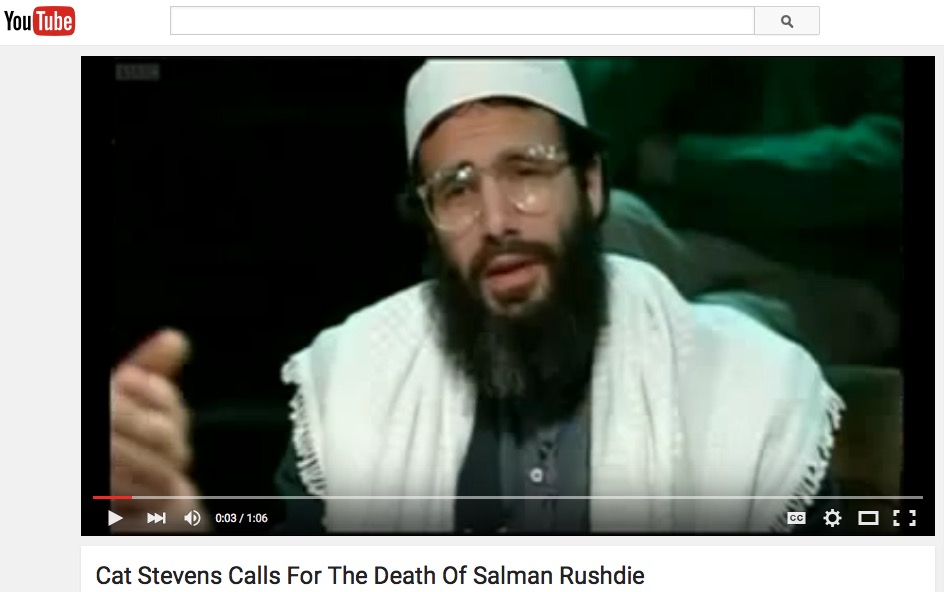
Yusuf Islam (aka Cat Stevens) calls for death sentence against Salman Rushdie, BBC, 1989, screenshot
Islam remains imperialistic. It demonizes all faiths save the Abrahamic, whose non-Muslim believers it aspires to subjugate. Among its own faithful, apostasy merits a death sentence. Just ask Yusuf Islam (aka Cat Stevens), who in 1989 endorsed the fatwa against Salman Rushdie but now claims “I was never a supporter of the fatwa,” insisting in a January 2015 Rolling Stone profile that “People need to get over it. It’s 25 years ago. I’ve got gray hair now. Come on. I was fool enough to try and be honest and tell people my position.” Shame on us for taking him at his word.
Islam has zero tolerance for atheism and agnosticism. It views all non-believers as “kuffar” — a derogatory term denoting ingrates and infidels. Its proponents actively profess its incompatibility with western values, however construed.
To watch Muslims swarm across the Mediterranean into western and eastern Europe therefore raises questions that go far beyond the immediate economic impact of this demographic largesse — which, I should add, is driven by Al-Qaeda and ISIS/ISIL, perhaps as collateral damage but possibly as a long-term colonization strategy. From a sociocultural standpoint, this mass exodus from the Middle East cannot possibly benefit the countries on its receiving end. It constitutes a mass influx of people whose most cherished religious beliefs are inimical to secular democracy. And however much we may decry the periodic failures of one or another European nation to live up to the requirements of democracy, in that regard they all stand head and shoulders above Saudi Arabia or any other Islamic-ruled state. As Sam Harris wrote so presciently in 2004, “[W]ere democracy to suddenly come to these countries, it would be little more than a gangplank to theocracy.”
Because Islam itself argues vehemently for theocracy and denies the very premise of a secular state, I must reluctantly agree with Ben Carson, whom I consider in most other respects a blithering idiot: I would not want a practicing Muslim in the White House. (I hasten to add that I certainly wouldn’t want a Seventh-Day Adventist nincompoop like Carson there either.) To my further consternation, the more I learn about Islam the more I come to accept Mark Basseley Youssef’s anti-Islam provocation, the 2012 film Innocence of Muslims, as docudrama. However crude, cartoonish, and even offensive I might consider those images he constructed, they pale by comparison with the images enthusiastically produced and distributed by Muslims themselves — images that evoke no comparable outrage within the Ummah.
•
Periodically, in this space, I inveigh against weasels who, as a last defense, echo the apologia for her racism of Sony Pictures’ Amy Pascal: “The content of my emails to Scott [Rudin] were insensitive and inappropriate but are not an accurate reflection of who I am.”
By that measure, I judge the rote denials that Islamism isn’t a true form of Islam — in Yusuf Islam’s words, “[ISIS] has nothing to do with Islam” — as either willfully deceptive, delusional, or both. ISIS/ISIL represents a fundamentalist form of the faith practiced by people who have studied the Qur’an and the hadiths, and who follow to the letter procedures and plans approved by high-ranking religious figures.
No change from within can come until “moderate Muslims” own that truth. And we kuffar who stand outside the faith do those moderates no service when, like Ben Affleck and other well-meaning white liberals, we parrot the lie that ISIS/ISIL is not an accurate reflection of who Muslims are. It may not be the whole picture, but it’s unquestionably part of it.


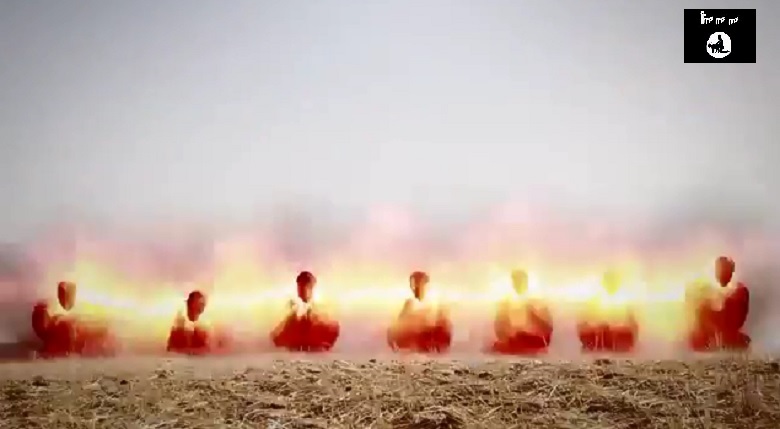
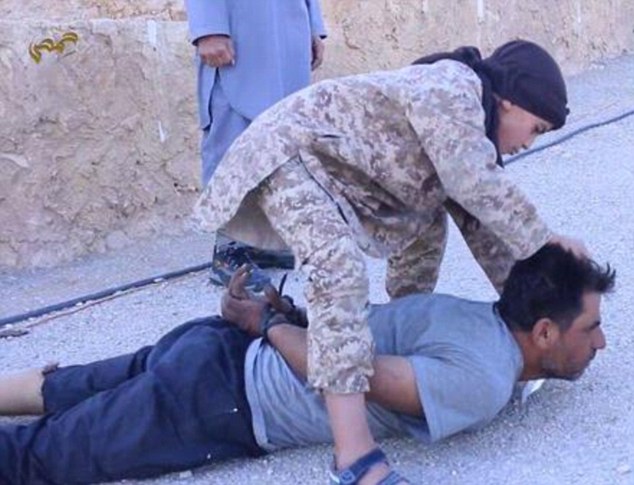
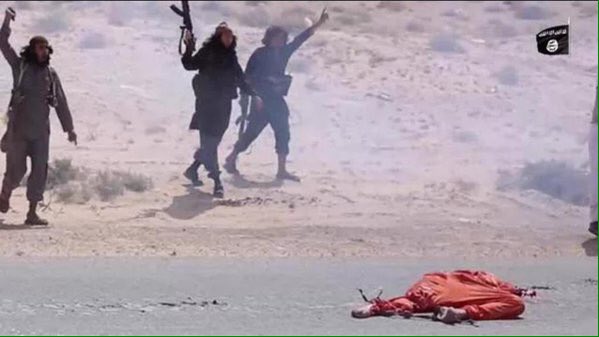
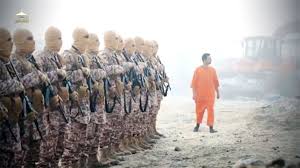
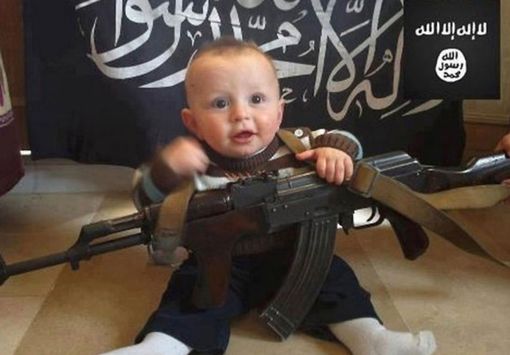
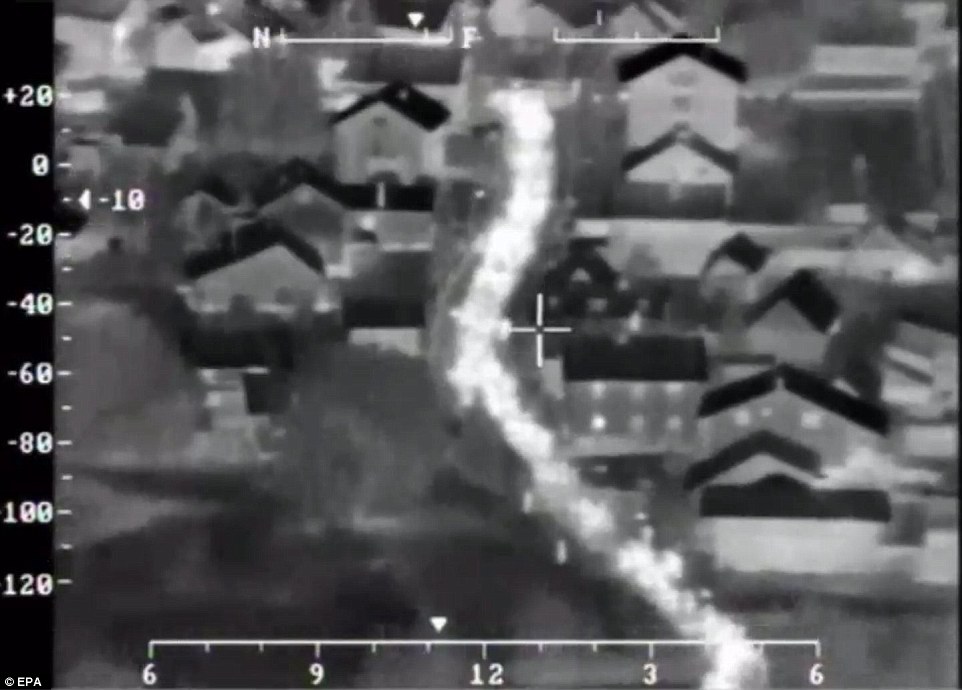

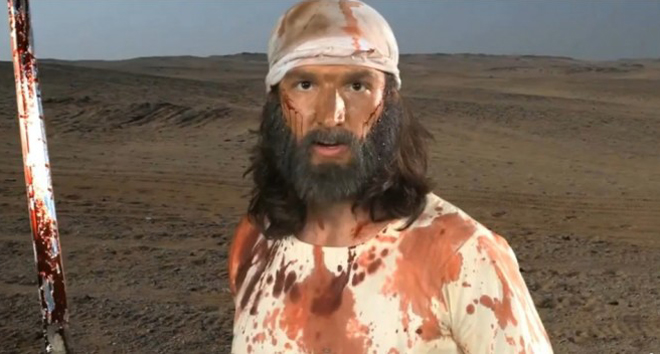
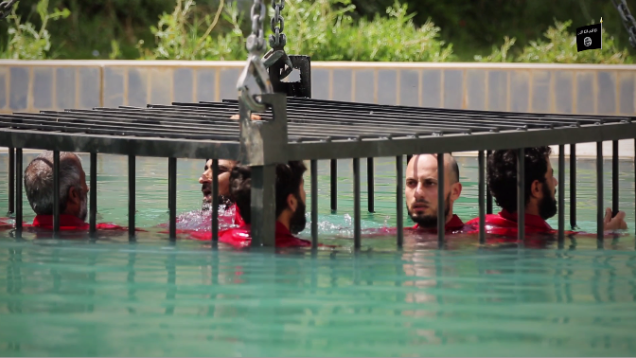




Good report.
I am too busy with my photography to study much about anything else, so your bringing me up to date was most welcome.
Lots of things I did not know. Even a word I have not heard since my childhood days of watching cartoons….smithereens!
God/s … arguably one of the worse inventions man has ever made.
“I find it hard to picture the audience to whom those projections would appeal.”
To even begin to provide a response would be, in today’s jargon, to worldsplain – to rummage through the most horrifying known incidents and movements in history (Thucydides and his daily readings of entrails is far from alone). Your list of the atrocities of these films are sufficient (and too little known about – it’s only the beheadings that are usually mentioned) for anyone with any imagination. It may make it difficult or impossible to ever think as kindly about the ingenuity displayed in certain animated cartoons.
From the preceding column, Charles Mintz nails the general photographic response with the Coriolanean metaphor that “His success picks at a scab that lingers in photography, the idea of being a professional.” It recalls the outrage many years ago that met a prospectus by a student for a workshop with George Krause that dared to suggest his artistic “status” was higher than others thought warranted. It may be a sign of progress that Lik has seen no need to apologize for the stir he has raised.
And on the same question of “professionalism” I feel compelled to ask Daniel D. Teoli, Jr why (knowing no more about the circumstances of how that institution was approached than stated), you then “still ended up donating the photos that came from the project to them.” Or, rethinking what I just wrote, perhaps I would rather not know.
“By that I refer to the negative effect of those images and projections on non-Muslims worldwide — a revulsion intensified by the abject failure of so-called “moderate Islam” to denounce Islamism in general and its proudly bloodthirsty component in particular. From this silence one can only conclude that, faced with a version of their faith that finds support in the Qur’an and hadiths and endorsement from recognized if controversial religious leaders, ‘moderate Islam’ either covertly approves of these extremes or cowers in the face of them.”
Allan, do you not take into account the formal, public denunciations of ISIS by imams and other Muslim leaders around the world? Just a few sample reports below.
http://www.huffingtonpost.com/2014/07/12/imams-denounce-isis_n_5579370.html
http://mediamatters.org/research/2014/08/21/muslim-leaders-have-roundly-denounced-islamic-s/200498
http://english.alarabiya.net/en/News/world/2014/09/10/French-Muslim-leaders-denounce-ISIS-brutality-.html
http://www.theguardian.com/world/2014/sep/15/isis-doesnt-deserve-to-be-called-islamic-australian-imams-say
I do see these public service announcements, which I consider generic, obligatory under the circumstances, and a matter of self-protection and self-interest. I don’t see these bold imams denouncing anyone by name, excommunicating Islamists (including Islamist clergy), declaring them apostate and/or blasphemous, and issuing fatwas against them. And I don’t see hundreds of thousands of the faithful standing up to denounce ISIS in their places of worship, or marching in the streets to demonstrate their commitment to peaceful coexistence with believers of other faiths, democracy, and secular society.
As for the claim by Ammar al-Asfar, imam of Al-Iman Mosque in the northern French city of Lille, that “‘What ISIS is doing is against the values of Islam,’ … explaining that killing people, forcing people to convert to Islam and oppressing women was never part of the Islamic religion”: Even the most cursory reading of the Qur’an and hadiths proves otherwise.
Keep in mind that lashing, cutting off of the hands and feet, death by stoning, and other barbaric practices are hardly the exclusive province of ISIS/ISIL. Such “crimes” as false prophecy, blasphemy, repeated drug use, apostasy, adultery, witchcraft, and sorcery are punishable by beheading with a sword in Saudi Arabia, where Shari’ah law rules (and elsewhere in the Middle East). I might add that until recently women couldn’t vote or run for office there either, and still can’t drive.
Given that none of the imams to whose pronouncements on ISIS/ISIL you link has ever raised his voice against the legal system in Saudi Arabia, I can’t take seriously their denunciation of ISIS/ISIL, which reeks of hypocrisy. It’s important to note that the Qur’an and hadiths place no burden of truthfulness on Muslims in their relation to kuffar; to the contrary, lying to further the goals of Islam is specifically endorsed.
I suggest that you might want to explore a bit further, Allan. Fatwas have been issued against ISIS/ISIL/Daesh. Check the documentation being done by the Bridge Project at Georgetown University.
As for Saudi Arabia, read what the Islamic Supreme Council of America has to say about Islamic radicalism and its Wahhabi roots. Not enough space here to delve into the intertwining of Saudi Arabia’s Wahhabi clerics and the Saudi monarchy, and the role of the Sunni/Shi’a divide.
As for Shari’ah law, that too is complex. (I state this after long discussions with a Pakistani scholar at risk, now teaching in the U.S., who introduced me to the concept of tajdid.) For example, as outlined in a piece published by the Council on Foreign Relations: “There is significant debate over what the Quran sanctions and what practices were pulled from local customs that predate Islam. Those that seek to eliminate or at least modify these controversial practices cite the religious tenet of tajdid. The concept is one of renewal, where Islamic society must be reformed constantly to keep it in its purest form. Though many scholars share this line of thought, there are those who consider the purest form of Islam to be the one practiced in the seventh century.”
Sources:
1. http://www.npr.org/2014/09/25/351277631/prominent-muslim-sheikh-issues-fatwa-against-isis-violence
2. http://bridge.georgetown.edu/muslims-use-creative-campaigns-to-denounce-isis/ and
http://bridge.georgetown.edu/here-are-the-many-muslim-condemnations-of-isis-youve-been-looking-for/
3. http://islamicsupremecouncil.org/understanding-islam/anti-extremism/7-islamic-radicalism-its-wahhabi-roots-and-current-representation.html
4. http://www.cfr.org/religion/islam-governing-under-sharia/p8034
I’d hope I wouldn’t need to clarify that I’m aware there are millions of moderate Muslims who have adapted their lives to secular societies, live therein relatively happily, and wouldn’t dream of running amok among their fellow citizens with cleavers or explosive vests.
I certainly find intriguing the argument that the purest form of Islam — and, presumably, of any religion — is its most recent updating. I wonder how many actually agree with this. Strikes me as sophistry. (By that logic, Reform Judaism is purer than its Orthodox antecedent.) Moreover, “reform” is a slippery concept at best. Islamists believe they are reforming and renewing Islam and the Ummah by purging both of corrupting influences.
My main point: Christians don’t get to claim that the people who authorized and organized and conducted and participated in the Crusades, the slaughter of the Albigensians, the Inquisition, the killing of Aztec babies immediately after baptism, the destruction of indigenous cultures in the name of Jesus, and all the other atrocities wrought worldwide by the Catholic Church “weren’t Christians” but merely “claimed to be Christians,” or that they “hijacked Christianity,” or that all that activity “wasn’t true Christianity” or “wasn’t what Christianity is about.” Those would be lies, widely recognized and ridiculed as such.
However belatedly, the Church has recognized many of its most disastrous errors, owned them, and apologized for them. That process couldn’t commence until the Church acknowledged that the people committing those crimes against humanity were all believing Christians who found ample support for their actions in the Bible and the priesthood.
By the same token, those who make those excuses for Islamism and Islamists (Kareem Abdul-Jabbar only the latest) are lying — to us and, no less dangerously, to themselves. Muslim fundamentalism doesn’t just represent what Jungian psychology would call the “shadow aspect” of Islam, an unconscious, normally suppressed force that bubbles up uncontrollably from time to time. Murderous rage against unbelievers, and death sentences for them (as well as eternal damnation), and the obligation to help bring the entire world into the Ummah, are built in to the Qur’an and the hadiths, just as their equivalents are welded into the Old and New Testaments. Pretending otherwise serves no one.